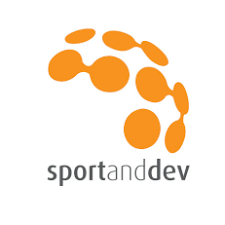
https://www.sportanddev.org/en/article/news/calling-changemakers-move-be...
Two years into the pandemic, we know that COVID-19 led to rapid and unprecedented changes in daily physical activity (PA) behavior in millions of people worldwide. Notably, the COVID-19 pandemic has not come to an end and it remains to be seen how it continues to affect PA levels in different groups and whether existing inequalities continue to grow.
We also know that globally the pandemic and its associated lockdown restrictions have amplified inequalities on many levels, including PA opportunities. In many high-income countries (HICs), it has been observed that policy and environmental changes, willpower, and human creativity generated novel PA-enabling digital, social, and physical environments. Examples include pop-up bike lanes, the closure of streets for active mobility, the provision of digital PA opportunities (streaming services for exercises, app-based fitness programs, instructor-based facilitated online live or recorded exercise classes, or sport-specific apps designed by sporting organizations), combined with improved pedestrian infrastructure.
These opportunities never arose in many low- and middle-income countries (LMICs) due to a lack of resources, infrastructure, and capacity. This is not surprising knowing that many LMICs simply had different priorities during the pandemic, struggled with hunger, violence, resources, and skilled personnel in addition to often poor internet stability and access to functioning digital devices. As a result, knowledge and awareness regarding the benefits of PA in LMICs can be profoundly limited.
This gives an overall dire picture of the above mentioned PA inequality and it is clear that opportunities to engage in regular PA vary immensely for a wide range of complex and interrelated reasons (eg, traffic, safety, infrastructure, limited resources or competing health and development priorities, political willpower, cultural barriers). But that must not halt us from exploring the environmental, political, and sociocultural aspects that drive (or not) people to lead an active lifestyle in LMICs. On the contrary, it should drive us (even more) to explore PA niches.
In all our efforts to get more people more physically active, we must more clearly point the needle toward the contextual differences prevailing in LMICs and emphasize that reducing the domain-specific PA inequality may be yet another step in more inclusive research agendas. And this bring us to the long untouched topic of bridging the research divide between two largely similar yet separate research spheres: PA in LMICs and the sport for development (SFD) sector.










Add new comment